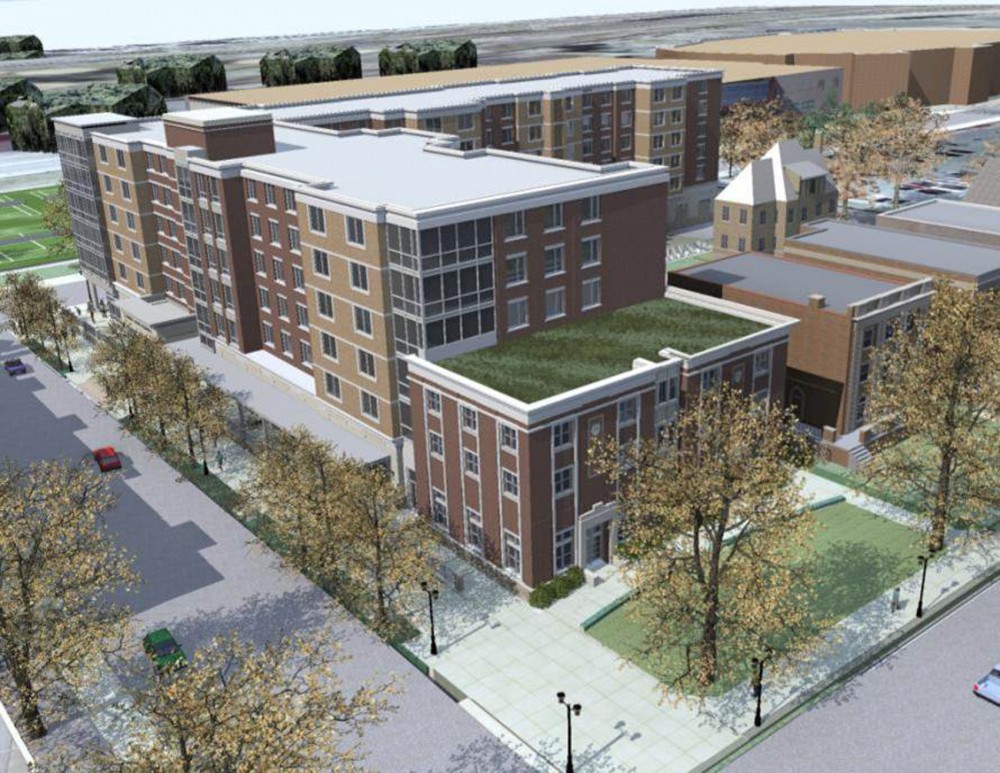Colleges across the country are moving to more sustainable student housing options, and the University of Minnesota is following the trend with its new residence hall.
Once it opens in August 2013, the $62.5 million Fourth Street Student Residence Hall will house 600 students and have energy and water-saving features –– making it the first sustainable residence hall on campus, said Laurie McLaughlin, director of Housing and Residential Life.
The main green feature will be a vegetative roof, which will collect storm water and store it in a tank to be recycled for toilet water, said Kevin Ross, a senior project manager for Capital Planning and Project Management.
The building will consume a projected 6,000 gallons of water a day and the tank can hold up to 36,000 gallons, Ross said. Once the tank runs out, the system will pump water in from the city.
The building will also have energy saving appliances and sensor lighting which will turn off when a common area is empty, Ross said.
The original cost to power the building for a year would have been $761,110. With the energy saving features, it’s projected to be $574,741, he said.
While the facilities of the building are important for sustainability, education of residents also plays a part, said Libby Spotts, a University residence director.
Spotts said HRL plans to implement a green resident certification program for students living in the building. The program will help students make goals to save energy and calculate their carbon footprints.
There will also be competitions for floors to win pizza parties by saving the most energy, McLaughlin said.
There has been a big push for Big Ten schools to become more sustainable, Spotts said.
The University of Wisconsin-Madison, for example, is also moving toward more sustainable housing.
The school is currently constructing two residence halls with green features similar to the new University building.
The two dorms will cost $64 million total and house 582 students, said Paul Evans, University of Wisconsin-Madison’s director of housing.
One of the main features of the main building will be its green house, which students will be able to use to grow produce and learn about sustainable agriculture, he said. The building will also have solar panels.
Both buildings will have a green roof over dining facilities but not the water recycling system like at the University of Minnesota, he said.
“We’re not really out there in cutting edge, but we’re really looking at what makes some real common sense and what we can do from an environmental stand point and a cost standpoint,” he said.











